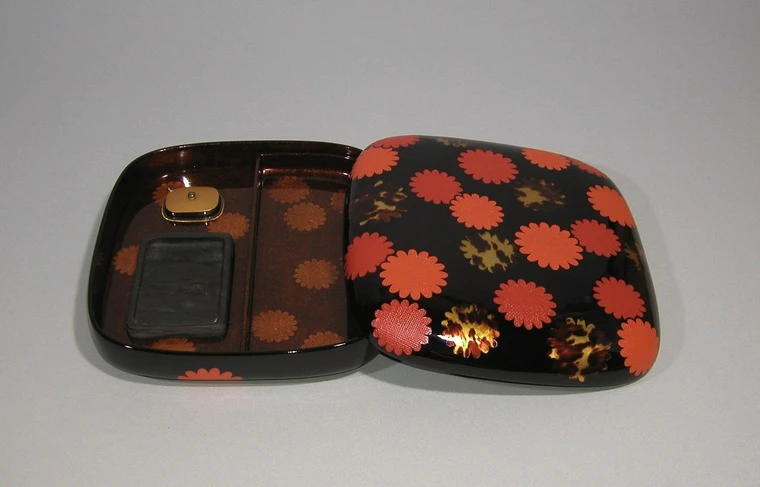Inkstone box with chrysanthemum pattern
Year.2000- according to today's currency rate
- shipping fees not included
- Lacquerware
-
Price Range
Under $14,000
Info
The prices of the artworks on Gallery Japan are determined by the artists themselves and are published directly on the website.
close - Awards at Japan Kōgei Assoc. Exhibitions : 1
About the Artwork
The main body is made of dry lacquer. Inside of the box is a shallow tray and a board to place under the inkstone. Chrysanthemum patterns are designed on the outside using red damascene inlay and tortoiseshell. The inside of the box is decorated with makie using coarse gold flakes.
Description
-
CategoryLacquerware
-
Year presented2000
-
Paulownia BoxIncluded
-
InstructionsUse indoors as the lacquered surface is vulnerable to UV rays and heat may cause deformation of the tortoiseshell. The shallow tray, inkstone, water jug and board under the inkstone are removable.
Techniques Used
Dry lacquer
For works of dry lacquer (kanshitsu), first a clay form is created and plaster is used to take a mold of the form. Next, repeated layers of hemp cloth and lacquer are applied to the mold until they are built up to the desired thickness. Finally, the mold is removed and additional coats of lacquer are applied to finish the piece. The hemp fibers are strengthened when the lacquer bonds with them, making dry lacquer an excellent technique for creating sturdy forms with a significant degree of freedom.
Urushi-e
Urushi-e (“lacquer pictures”) is a decorative technique that consists of motifs painted in colored lacquer. Urushi-e is the oldest and most fundamental decorative lacquer technique.

